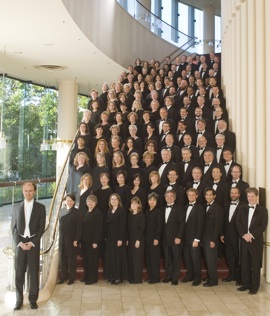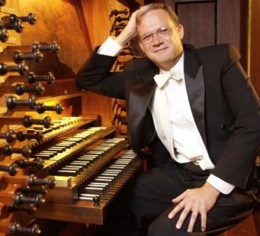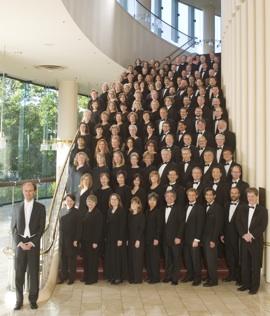
The San Francisco Symphony did some marvelous multitasking over the weekend. Even as Michael Tilson Thomas and the orchestra were in Vienna, wowing audiences with Mahler’s music on the first leg of their three-week European tour, the San Francisco Symphony Chorus under Ragnar Bohlin stayed in town to perform a splendid concert Sunday afternoon in Davies Symphony Hall.
The principal work on Sunday’s program, conducted with verve and precision by Bohlin, was Durufle’s “Requiem,” Op. 9. But Bohlin and his ensemble also made much of a collection of short works by Bach, Schubert, Schumann, Mahler, Samuel Barber, and Knut Nystedt. Bohlin, the S.F. Symphony’s Chorus Director since 2007, assembled the program with an ear to demonstrating the remarkable range of his ensemble, and the results were impressive. In his program notes, Bohlin allowed that there’s “something very tempting” about arranging solo songs for chorus, and the short works, which included several of his own arrangements — including one making its world premiere — suggested that temptation can yield considerable rewards.
Still, the Chorus made its most powerful showing in the second half’s performance of Durufle’s “Requiem.” Bohlin conducted the composer’s preferred version, for chorus, organ, and vocal soloists; it emerged an excellent showcase for the ensemble, from the insinuating blend of voices in the opening Introit, to the radiant “In paradisum” that concluded the work 35 minutes later.
Related Articles
Bohlin's Intimate Rendering of a Musical Colossus
Bach's B minor Mass
Singing With Vision
Interview with Ragnar Bohlin
In between, Bohlin elicited a wealth of detail. Durufle’s 1947 score marries Gregorian melodies to a 20th-century Impressionist’s palette, and the conductor fashioned these discrete threads into a fully integrated reading. The Chorus sounded strong yet refined in the work’s forte passages — the Sanctus brought a glorious outburst — and registered with potency in the quiet episodes: the pure tone of the Kyrie, the radiant singing of the Agnus Dei, and the glowing Lux aeterna. Best of all was the Domine Jesu; here, Bohlin achieved a softly shaded, enveloping sound that approached the mystical.
The vocal soloists were exellent; mezzo-soprano Leah Wool deployed rich, pliant tone in the Pie Jesu and Michael Taylor made the most of his brief but essential part in the Libera me. But it was organist Robert Huw Morgan, imparting fluency and a firm pulse to Durufle’s undulating score, who took top honors.
The first half opened with a bit of attractive staging in Nystedt’s Immortal Bach, a fantasy based on the Bach chorale Komm, susser Tod. The Chorus, filing in from the back of the hall, took places on both sides of the orchestra section; Bohlin, conducting with exquisite focus, drew pure-toned “surround sound” from the group. Busslied followed, with Bohlin eliciting a silken vocal blend in Peter Cornelius’s setting of the Sarabande from Bach’s French Suite No. 1.

Bohlin’s own arrangements were featured next, in a pair of songs originally composed for voice and piano: Schubert’s An Silvia and Schumann’s Widmung. In the former, the familiar solo part bloomed in lustrous choral sound passed from women to men to mixed chorus. The latter, with Bohlin’s arrangement making its world premiere, yielded a lovely homophonic setting in which every voice seemed distinct. Pianist Matthew Edwards played with apt emphasis.
Barber’s “Agnus Dei” is a transcription of the slow movement from the composer’s own String Quartet — music that is best known in Barber’s orchestral arrangement as the Adagio for Strings. Bohlin led a pointed performance, with Morgan’s organ accompaniment lending beauty to the sound.
Two Mahler works completed the lineup: Ich bin der Welt abhanden gekommen, from the Ruckert lieder, and Scheiden und Meiden, from Des Knaben Wunderhorn (both arranged by Clytus Gottwald.) The former, originally composed for mezzo-soprano and orchestra, acquired a sheer, otherworldly edge in the Chorus’ performance; sopranos Kaileen Erin Miller and Cindy Wyvill made lithe solo contributions. Despite its text, Scheiden und Meiden (The Pain of Separation) comes across as exuberant; Bohlin sculpted it in handsome blocks of sound. Even with the orchestra half a world away, the Symphony’s Mahler tradition proceeds apace here at home.

